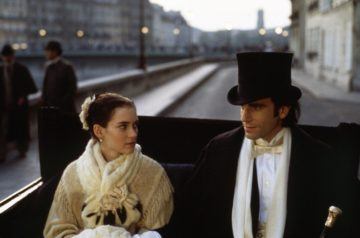Hillary Kelly in The New Yorker:
 When she began writing “The Age of Innocence,” in September, 1919, Edith Wharton needed a best-seller. The economic ravages of the First World War had cut her annual income by about sixty per cent. She’d recently bought and begun to renovate a country house, Pavillon Colombe, in Saint-Brice-sous-Forêt, where she installed new black-and-white marble floors in the dining room, replaced a “humpy” lawn with seven acres of lavish gardens, built a water-lily pond, and expanded the potager, to name just a few additions. She was still paying rent at her apartment at 53 Rue de Varenne, in Paris—a grand flat festooned with carved-wood cherubs and ornate fireplaces. The costs added up.
When she began writing “The Age of Innocence,” in September, 1919, Edith Wharton needed a best-seller. The economic ravages of the First World War had cut her annual income by about sixty per cent. She’d recently bought and begun to renovate a country house, Pavillon Colombe, in Saint-Brice-sous-Forêt, where she installed new black-and-white marble floors in the dining room, replaced a “humpy” lawn with seven acres of lavish gardens, built a water-lily pond, and expanded the potager, to name just a few additions. She was still paying rent at her apartment at 53 Rue de Varenne, in Paris—a grand flat festooned with carved-wood cherubs and ornate fireplaces. The costs added up.
Wharton recognized her place in the pyramid of the super-rich: tantalizingly close to the pinnacle, but never quite there. (For her, a difficult financial decision would take the shape of having to give up plans for ornate iron gates at the Mount, her thirty-five-room mansion in Massachusetts.) To continue to live as she was accustomed, she needed a new hit. “The Age of Innocence,” which Wharton produced in seven months, offered her the chance to make money by writing about money—a return to form after four years of war stories that, her publishers frankly told her, weren’t selling. From her perch thousands of miles from the gatekeepers of New York society, and nearly fifty years on from the eighteen-seventies setting she had chosen, Wharton invited the hoi polloi right into the living rooms of Manhattan’s upper crust, for an insider’s exposé. “Fate had planted me in New York,” she writes in her memoir, “A Backward Glance,” “and my instinct as a story-teller counselled me to use the material nearest to hand.”
More here.
